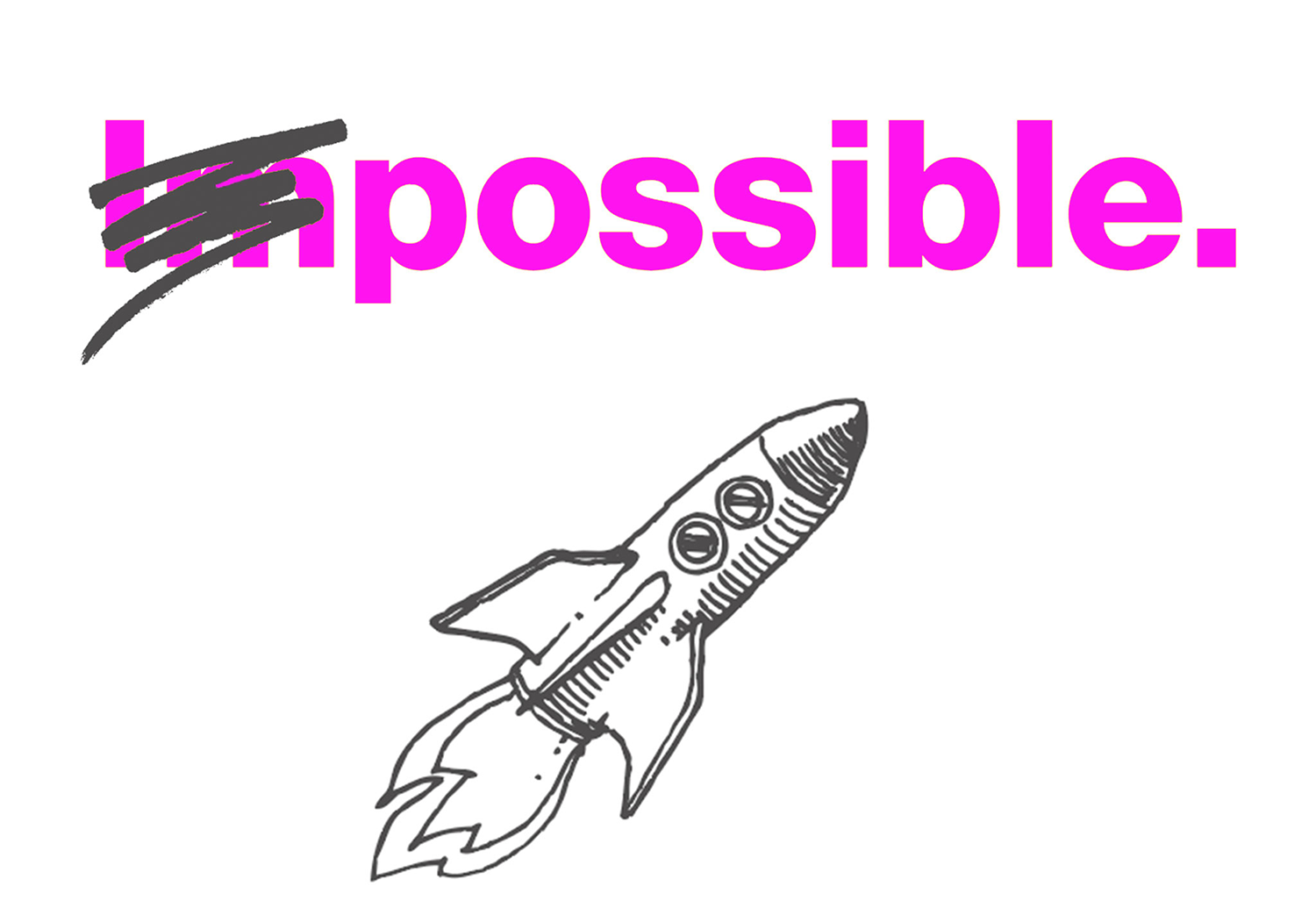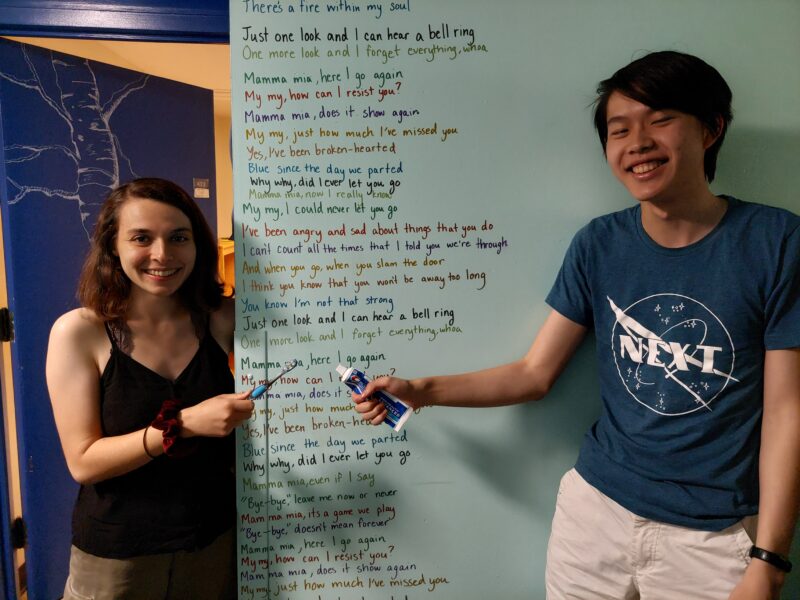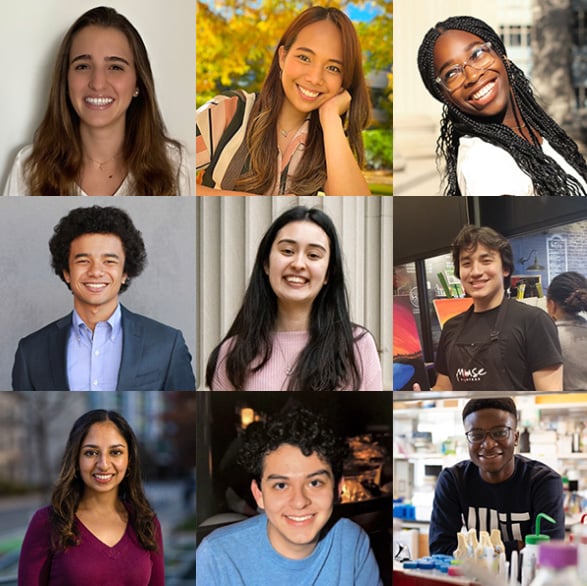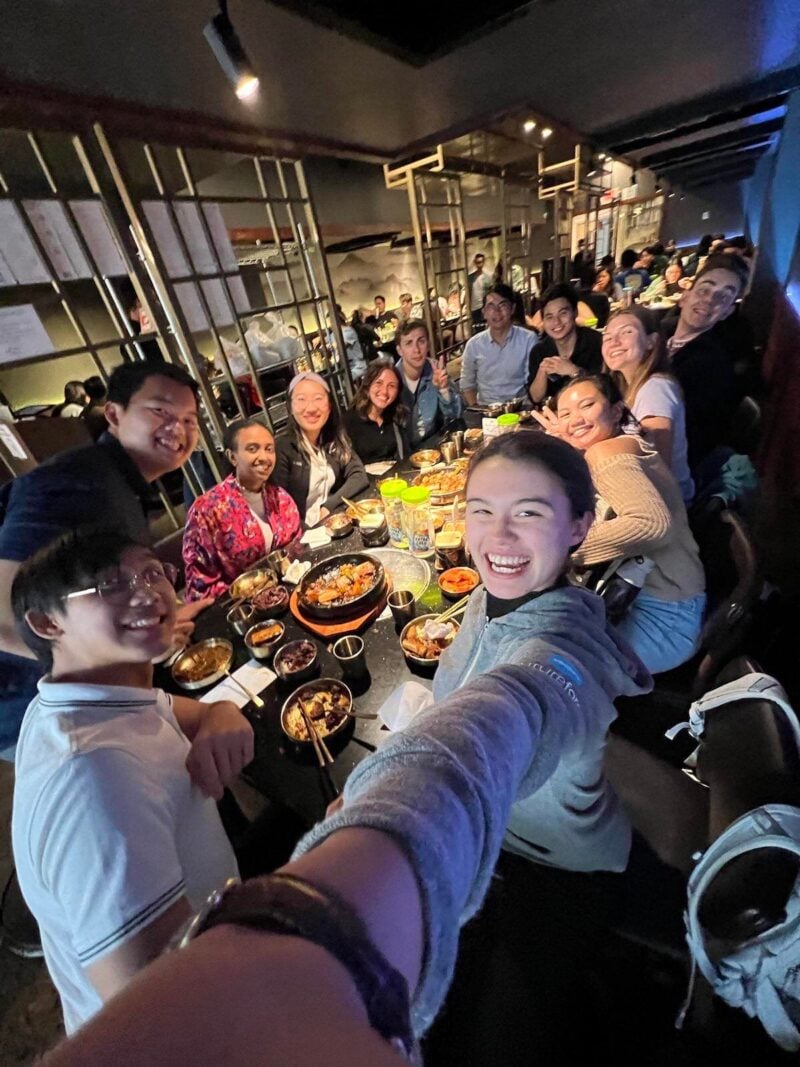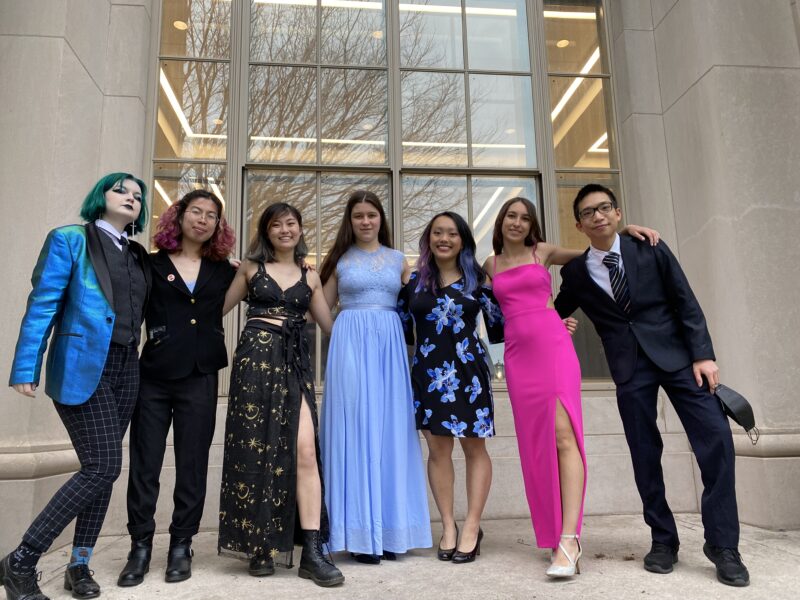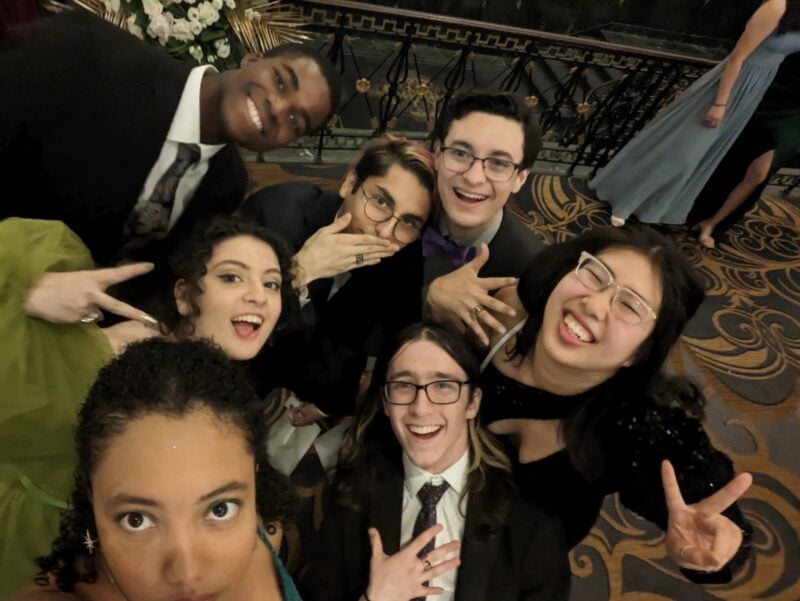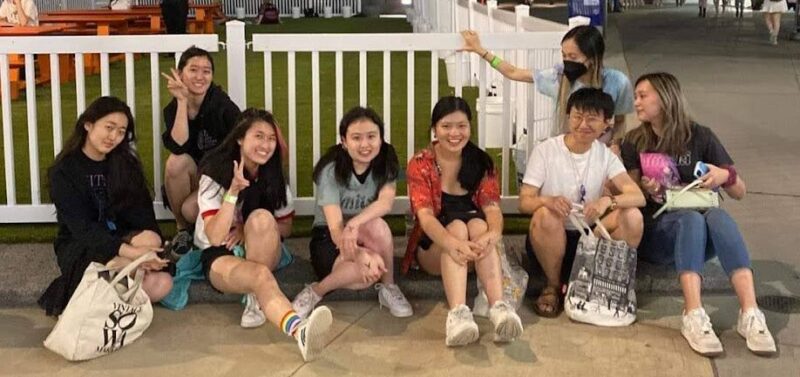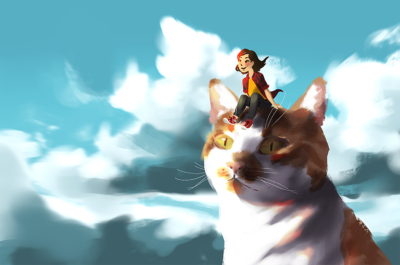
We’re so glad you’ve chosen to learn more about us!
tl;dr
We’ve filled this page with info and resources about what it’s really like to be a student here.
There are videos to watch, blogs to read, student adventures to follow—and don’t forget to come back and visit mitadmissions.org often to see the latest from our student bloggers.01 Our student bloggers are chosen to write about their own particular story and pathway through MIT. Each experience is different, filled with success and failures, and a lot of exploration along the way. We don't read, edit, or proofread them. Bloggers have direct access to write honestly and authentically about what it's like to be a student here. So we encourage you to check them out, there are 7,300 as of this writing. We hope you’ll get a good sense of the MIT community and if it might be a place you’d like to call home.
And if you haven’t signed up for our newsletter yet, what are you waiting for?!
topics to explore
affordable | diverse and welcoming | collaborative | passionate and nerdy | practical and hands on | community focused | blogger images
MIT is more affordable than you think
At MIT, we admit the most talented students in the world through need-blind admissions. Once admitted, we meet your full financial need for all four years of your undergraduate career.
One of nine
We are one of only nine American universities that is need blind and full need,02 Prospective students are not disadvantaged in the undergraduate admissions process because of their financial need. We meet the full need for all students, foreign and domestic. which means no student is disadvantaged in the admissions process because of their financial need.
We meet the full financial need of all admitted students who apply for aid, which means we offer financial aid based entirely upon your family’s demonstrated financial need—not any measure of merit.
- Free tuition: Tuition is free for families that make less than $200,000 per year (with typical assets).
- Debt-free: 87% of students graduate without loans
Resources and other helpful info
Student Financial Services: Our friends at SFS will help you learn more about undergraduate financial aid, visit their website at sfs.mit.edu.
Info for undocumented students: Undocumented and DACA students are able to apply for financial aid as non-U.S. citizens.
Veterans benefits and financial aid: We encourage you to apply for MIT financial aid to see if you can supplement your VA education benefits.
Student jobs and research at MIT: All students, regardless of their financial need, may work during the academic year—and most of our students do. They work on campus in labs, departmental offices and centers, as well as in the community.
Get a sense of how much it might cost to attend MIT
- MyinTuition Quick College Cost Estimator: The estimator provides a fast look at what your financial aid might look like based on six simple questions.
- Net Price Calculator: This tool will give you an in-depth estimate as to what your aid may look like. It will take roughly 20 minutes to complete. You will need to answer some basic questions about your parents’ financial situation so it might be helpful to have recent tax forms or pay stubs on hand before you begin.
MIT is diverse and welcoming
MIT is full of radically different people, from many different backgrounds, who support and learn from each other.
When we admit a class of students to MIT, it’s as if we’re choosing a 1,000-person team to climb a very interesting, fairly rugged mountain—together. We obviously want people who have the training, stamina and passion for the climb. At the same time, we want each to add something useful or intriguing to the team, from a wonderful temperament or sense of humor, to compelling personal experiences, to a wide range of individual gifts, talents, interests and achievements.
We are emphatically not looking for a batch of identical perfect climbers; we are looking for a richly varied team of capable people who will support, surprise and inspire each other.
Resources and other helpful info
MIT Black Students’ Union: The MIT Black Students’ Union serves to provide support for Black students and to promote social interactions between students, faculty, and alumni.
LBGTQ+ Services: This amazing team supports student, employee, and alumnx groups, as well as other departments and initiatives on campus aiming to foster equity, intersectionality, and the continuum of social justice. LBGTQ+ Services’ support, programming, and educational endeavors aim to enhance the experiences of MIT’s LBGTQ+ community. Follow them on IG: rainbow_lounge_mit
Student Veteran Success: As a part of the Registrar’s Office, Student Veteran Success is MIT’s dedicated point of contact for service members, veterans, and their dependents. They work with offices across the Institute to ensure a smooth transition through your academic career and help you navigate your VA education benefits.
Latino Cultural Center: The LCC is the hub for Latino students and student organizations, as well as individual community members interested in learning more about Latino culture. The LCC provides a space for students to meet with study groups or to study individually, to socialize, and to hold cultural and social events.
Undocumented student support: Student Support Services ( or S3 pronounced “S Cubed”) provides individualized advocacy, support, and resources to undocumented and DACA students in the MIT community.
First Generation and/or Low Income Program: Part of the Office of the First Year, FLI builds a sense of community among first generation and low-income MIT students, faculty, alumni, and staff, while raising awareness of their unique experiences.
It will come as no surprise that we like data: Our friends at Institutional Research maintain a wide variety of data. Much of this data is related to people, where you can explore the MIT community from a variety of perspectives.
Blogs
- SHASS Hack feminist hacktivism, by Paige B. ’24
- Reaffirming our commitment to diversity in uncertain times, by Stu Schmill ’86
MIT is…passionate (and a little nerdy)
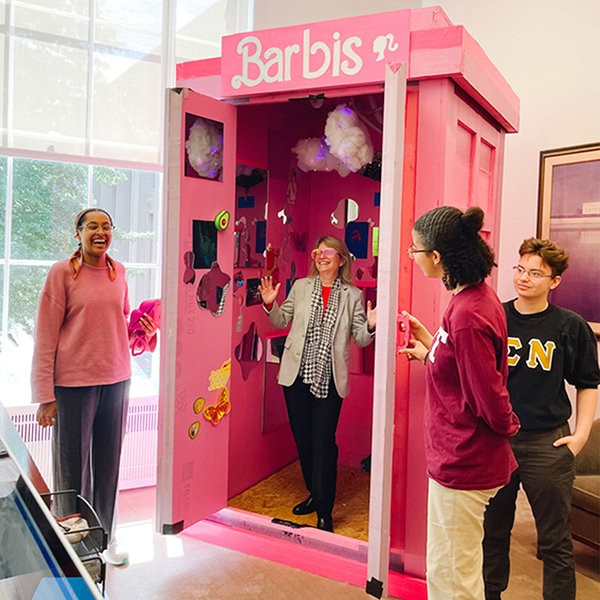
We love to tackle tough challenges. But just because our work is serious doesn’t mean we have to be.
MIT students are known for their creative problem-solving skills and their desire to make the world a better place—and you can see those values at work in classes, clubs, and playful hacks (or a combo of all three).
At its foundation, MIT promotes the spirit of free and objective inquiry and provides opportunities for unusual interests and aptitudes. From 2.009 Product Design Processes, to the murals in MIT’s underground tunnels that come alive through augmented reality, to Bad Ideas Weekend, the annual competition that celebrates ridiculous projects, MIT students find a way to incorporate an element of playful inquiry into everything they do.
Stories and spaces to explore
Incoming MIT students surprise President Kornbluth with “Barbis” installation
For Interphase EDGE/x participants, a life-sized Barbie-themed TARDIS prompts reflections on social norms.
“This exemplifies the creativity, the innovation, and the technical know-how of MIT students, and I’m amazed they created this in their first hour [as undergraduates].” —President Kornbluth.
What Interphase Edge/X is all about
The two-year scholar enrichment program is an eight-week summer session and programming during the academic year to help you with the transition to MIT and build community here.
2.009: MechE’s amazing class, Product Design Processes
2.009 is one of the most famous MIT classes. Seniors experience team-based product development as they design and build working prototypes of new products. Creativity, product design, and collaboration, are at the core of this class. Check out this year’s topic, “Wild.”

But you don’t have to wait for your senior year, you can explore product design in 2.00b, read Michael C.’s blog about why you should take this class, and browse the class website.
Borderline Mural Project
Borderline began as a project to cover a 200-foot-long wall in the tunnels under MIT. In the spring of 2017, over 25 MIT-affiliated artists started painting murals in the tunnels. Since then, Borderline has expanded to over 65 murals in the tunnels and Banana Lounge (26-110) on campus. More murals and animations are added every semester.
MIT’s Justin Yu wins Classic Tetris World Championship
Read how all the pieces fell into place as Justin captured the Tetris world title.
“If you have 59 seconds to devote to pure joy, you won’t regret watching this video clip of Justin “Fractal” Yu, an MIT junior who, on Oct. 15, became the top classic Tetris player in the world by winning the 2023 Classic Tetris World Championships.”
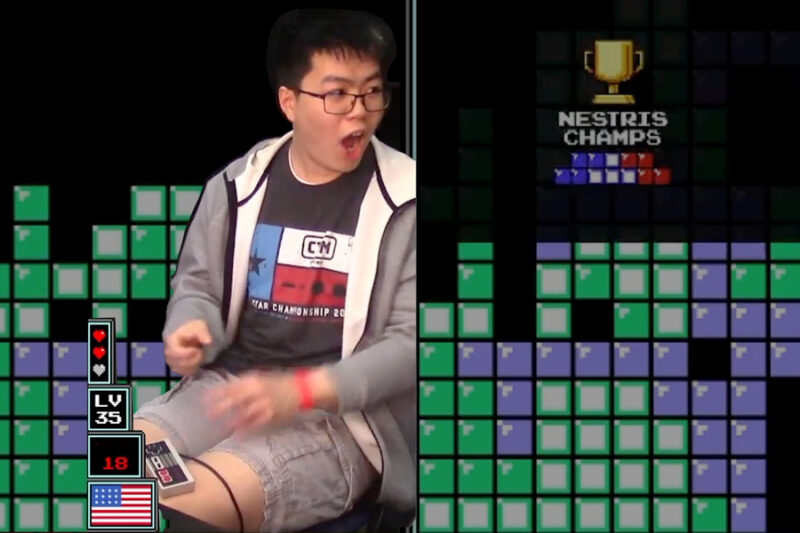
Justin Yu reacts to his Classic Tetris World Championship win on October 15, 2023.
And lastly, (but not leastly) Bad Ideas Weekend: http://bad-ideas.mit.edu/
Have you always wanted to design and build, but have been frustrated by silly requirements and “good engineering practice?” Well, at MIT we got you—in the form of our annual Bad Ideas festival. The time and place where (bad) ideas take off and crash straight to the ground. No skills required, tools and materials provided.
MIT is…collaborative

MIT is full of people who support, surprise, and inspire each other.
A collaborative and cooperative spirit is part of what we look for when we’re building a class—it’s at the core of MIT. From the Handbook of Academic Integrity to the core values of CSAIL or the Media Lab, collaboration is a through point for academics, interdisciplinary research, and our day-to-day lives. When you graduate, you’ll to need to know how to work effectively with others to solve complex challenges. And that’s just what you’ll do every day at MIT.
Stories and spaces to explore
It’s fundamental to our academic approach
By working with other students on projects, labs, and papers, you carry on a long tradition of contributing to the knowledge that will shape the future of our world. Peer-to-peer learning helps you understand the subject better. Working in teams trains you for collaborative work you will do in your profession. Crediting others for their contribution to your work promotes ethical practice.
Q: Is this entire question a self-referential ploy to transition to talking about collaboration in psets? A: Yes. The Process of Psetting, by Joel G. ’18
Forging climate connections across the Institute
The Fast Forward Faculty Fund (F^4) aims to spur new work on climate change and deepen collaboration at MIT.
“It’s taught me about valuing different ways of thinking.”
Joshua K. ’24 set a goal of taking classes in as many departments as he can before he graduates.
MINCE. A student-run food adventure.
“If we can craft dreams and futures from our love for specks in the night sky, for great geographic grandeurs, for meticulous machineries of life, then surely, it is just as important to take a pause and take a look down at what’s in our plate— and focus on the simplicity, complexity, significance, and experience of our food.”
Media Lab
“Our diverse community of students, researchers, faculty, and staff seeks to continually transform ideas into impactful new applications, fields, and movements by exploring imaginatively, experimenting iteratively, collaborating playfully, and analyzing critically. We will create opportunities for others around the world to engage in their creative explorations to envision better lives, communities, and environments.”
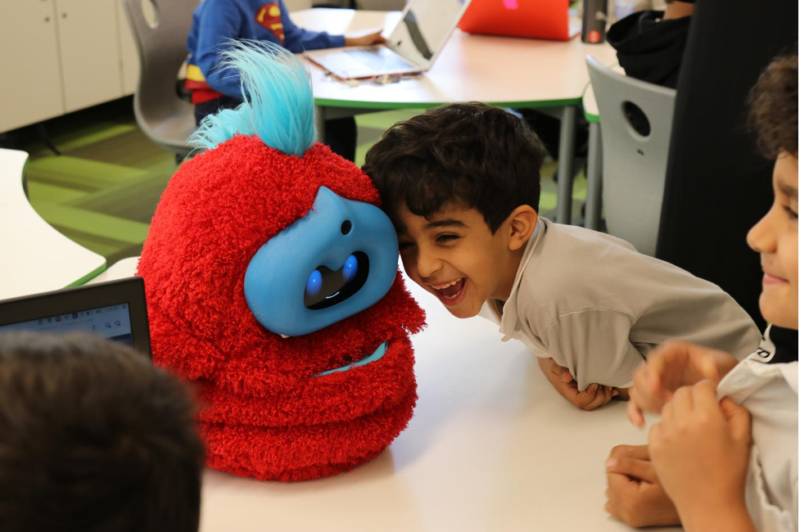
AI-powered robot named Tega in a Boston-area classroom. Tega is designed to improve the language and literacy skills of 5- and 6-year olds.
MIT is…practical and hands on
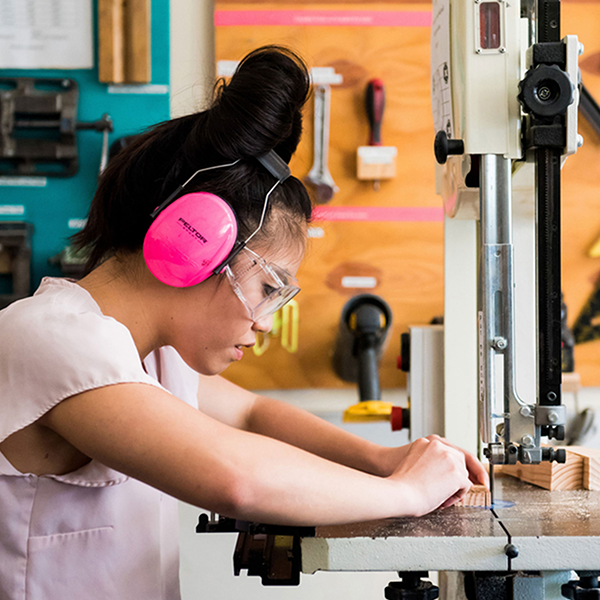
MIT encourages every student to act upon their knowledge to solve problems that transform society for the better.
As our motto mens et manus (mind and hand) suggests, our learning philosophy is rooted in marrying knowledge with action—whether designing, building, and presenting new products from scratch or conducting professional-level research through MIT’s extensive undergraduate research programs.
Stories and spaces to explore
Project-based classes
Many classes at MIT are project-based, and require you to become a creative, skilled maker-of-things to solve an open-ended problem. Some famous MIT classes that are project-based include 2.007 Design and Manufacturing, which is the academic inspiration for FIRST Robotics; 2.009 Product Engineering Processes, the largest product design class at MIT.
Watch the product launch of the Pink Team during the final 2.009 presentations.
Metropolitan Storage Warehouse
The Institute is building a next-generation campus-wide makerspace in the Metropolitan Storage Warehouse (Met), scheduled to open in 2025. The Met will be the new hub for interdisciplinary design research and education; a new home for the MIT School of Architecture and Planning, uniting many elements of the school in a single place; and a location for the largest community-wide makerspace on campus, managed by Project Manus.
“To understand how design can solve critical problems, we needed a place where we can incubate innovations for the built environment. The Metropolitan Storage Warehouse is on track to become a hub for design at MIT and in the world.”
–Hashim Sarkis
Dean, School of Architecture and Planning
Project Manus and making at MIT
Project Manus is the hub of our ever-growing maker system. With more than 130,000ft2 of makerspaces—and more on the way—MIT supports any student interested in making, whether novice or expert. Tools and facilities for CNC routing, 3D printing, glassblowing, wood and metal working, moldmaking and casting, robotics, circuitry, textiles, ceramics, biomaking, and more are available for class, research, and personal projects.
PKG Public Service Center
Public service is a springboard to take your learning beyond the classroom into communities around the world through internships, fellowships, and public service projects. The PKG Center provides guidance (and sometimes funding) to set you up with nonprofit organizations, government agencies, and social enterprises that drive change locally, nationally, and globally.
MIT is…not just about building things, but about building community too
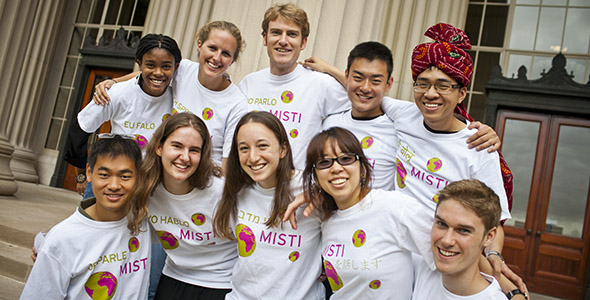
We’ve said it before…MIT’s best asset isn’t the nuclear reactor, the wind tunnel, or any lab or building—it’s the people.
The MIT community is the single biggest reason why admitted students enroll and why Professor Emeritus Jay Keyser once observed that “MIT is hard to get into, and even harder to leave.”
stories and spaces to explore
What dorm life is like : As part of getting to know MIT better, all first-year students are required to live in on campus. We have 10 unique residence halls that are unlike most other colleges, each has incredibly unique traditions not only between dorms, but between floors as well.
Student life, the place to find all things about housing, resources, wellness and more.
Housing and residential services, a stuffy name for the place you can find out more about our 10 residence halls.
REX: At MIT you choose where you want to live. You won’t be assigned a dorm that you don’t know. At orientation, you’ll experience REX week. Where dorms (and floors) show off their best, their most unique, their most defining elements—all just to convince you to live with them! You’ll have time to roam and visit them all and at the end of REX, you’ll make a final decision of where you want to call home. Visit the REX site to learn who or what DormCon is exactly, how you may want to FYRE, or just more about REX overall.
You should also read Petey’s blog where you can watch all of the i3 videos that undergrads make to woo first-years to their house/floor. Check out the 2023 Simmons i3 below.
Learn in a close-knit community: Coming to MIT can feel like going from a small pond to a vast ocean when it comes to classes, social life, and navigating a new city. But fear not! If it seems a bit overwhelming, there are ways to make your first-year experience more manageable. Joining a first-year learning community (FLC) may be the perfect solution.
FLCs are small academic groups where students focus on their classes through a particular lens, like sustainability or the humanities. Each one provides a supportive community of faculty, student mentors, and peers to study, socialize, and complain about psets with.
Check out all four: Terrascope, DesignPlus, Experimental Study Group, Concourse
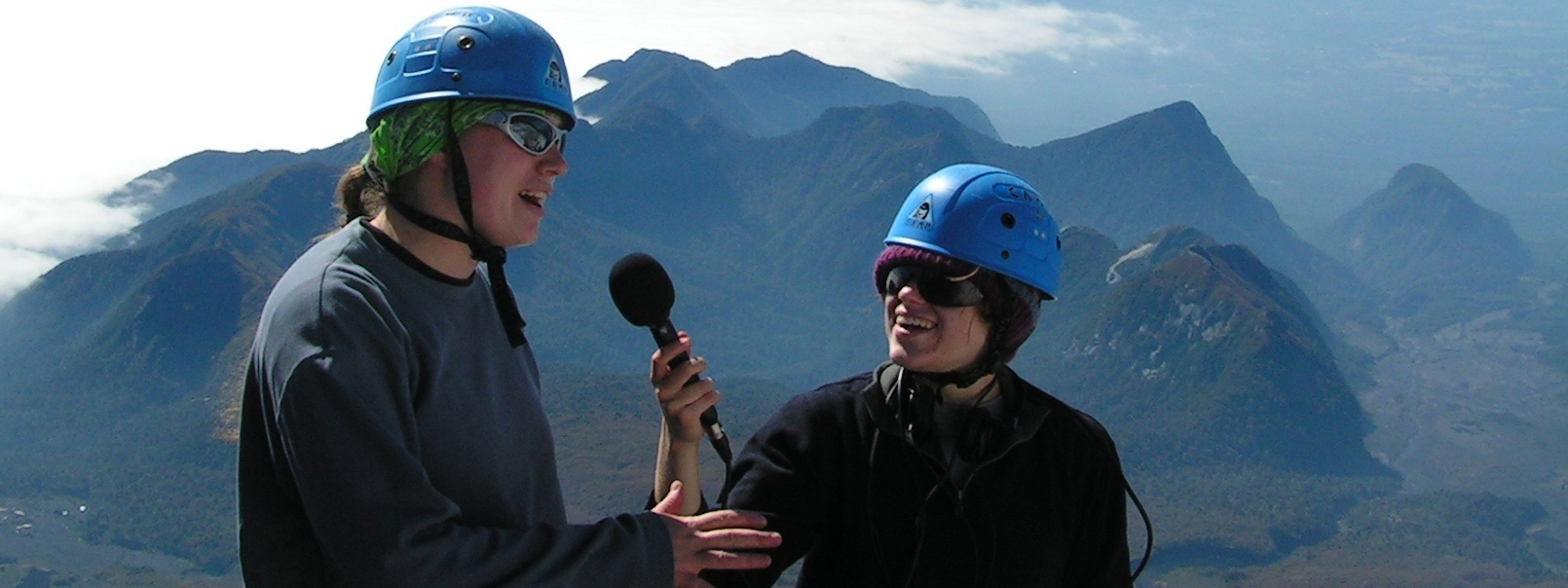
Make an impact on communities you care about: From your first semester through to your last, you’ll have the opportunity to contribute and make an impact in the communities that mean the most to you. Through the PKG Public Service Center, UROP, and MISTI, to name just a few, you’ll have opportunities to make a measurable difference in communities both near and far.
PKG Public Service Center: (Yes, we know we mentioned them earlier, but we can’t say enough good things.) Public service is a springboard to take your learning beyond the classroom into communities around the world through internships, fellowships, and public service projects. The PKG Center provides guidance (and sometimes funding) to set you up with nonprofit organizations, government agencies, and social enterprises that drive change locally, nationally, and globally.
UROP (Undergraduate Research Opportunities Program)
tldr: UROPing follows a basic rule of thumb—if you want one, you will find one.
At MIT, every student—first year or senior, scientist or humanist—has the chance to work on cutting-edge research. UROPs (as we affectionately call them) cultivate and support research partnerships between undergrads and world-class faculty to solve problems no one has solved before. 95% of undergrads UROP (yes, it is also a verb), usually for pay, sometimes for academic credit, and more than half take part in four or more.
MISTI (MIT International Science and Technology Initiatives): MISTI matches students with fully-funded internship, research, or teaching opportunities abroad. The program supports MIT’s educational mission by creating hands-on, international learning experiences for undergrads. Through MISTI you’ll collaborate with MIT faculty and their counterparts all over the world.
blogs to check out
- UROPing: research, science, and throwing big funnels in lakes by Amber V. ’24
- A UROP or Two: In which I ramble about how lucky I am to have such awesome UROPs by our own Ceri Riley ’16
- The joys of web development: or how i learned to stop worrying and love the web by CJ Q. ’23
There are currently (Jan 2024) 940 blogs about UROP, and you can go read them all by clicking this link!
- Our student bloggers are chosen to write about their own particular story and pathway through MIT. Each experience is different, filled with success and failures, and a lot of exploration along the way. We don't read, edit, or proofread them. Bloggers have direct access to write honestly and authentically about what it's like to be a student here. So we encourage you to check them out, there are 7,300 as of this writing. back to text ↑
- Prospective students are not disadvantaged in the undergraduate admissions process because of their financial need. We meet the full need for all students, foreign and domestic. back to text ↑
